35 years of Pac-Man: The 24 kilobytes that changed the world
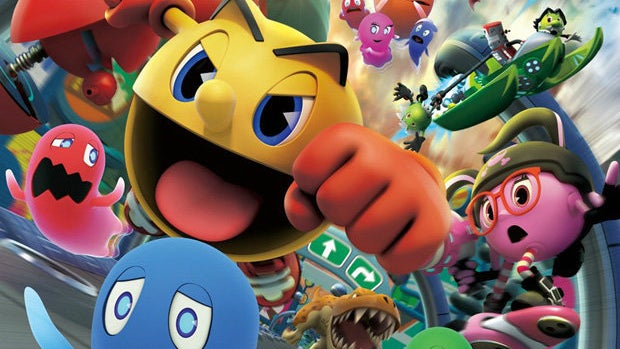
We take a look at the history and nostalgia around Pac-Man
Pac-Man is without a shadow of a doubt gaming’s first truly famous face. He predates the likes of Mario, Sonic, Lara Croft and every other interactive entertainment mascot and this year celebrates an amazing 35 years in the business. Despite his advanced years, the yellow pill-popper’s popularity shows no signs of waning – in fact, with a new TV show and series of games on the market, he’s gaining fame with an entirely new generation of players.
However, it was over three decades ago when Pac-Man first turned a legion of eager youngsters onto video gaming. The creation of Namco programmer Toru Iwatani, the original arcade game hit Japan on May 22nd, 1980 before arriving in North America five months later. The original game file size was actually just 24kb.
Originally titled “Puck-Man” in its native country, it wasn’t an instant success; it would be the Western launch – with the updated title of Pac-Man (an attempt by North American distributor Midway to avoid unruly teens substituting the “P” in Puck-Man with an “F” to create something a little less agreeable) – that would turn Iwatani’s creation into a household name all over the world. By 1982, 400,000 cabinets had been sold in the US alone, generating an incredible amount of revenue not only for Midway and Namco, but for the burgeoning amusement industry – it remains one of the highest-grossing video games of all time, having taken over $2.5 billion by the 1990s.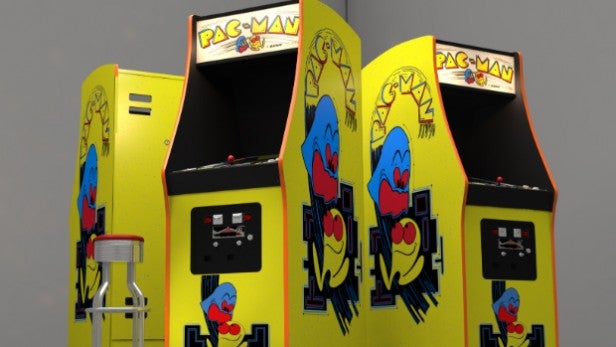
The Beginning of Pac-Man
“From my admittedly biased perspective, I remember the introduction – and subsequent explosion – of Pac-Man as a true watershed moment, perhaps the most important event in the entire history of video games,” states David Bishop of Namco USA. “Not because Pac-Man had the best graphics, audio or story ever, but because the intense popularity of Pac-Man literally altered the way that we as a culture perceived video games, bringing electronic game play into the full view – and appreciation – of everyone. Pac-Man not only popularised electronic play in the early 1980s, but also put a friendly and understandable face on the similarly new world of personal technology. And just as significantly, Pac-Man was one of the early video games to successfully break through generational and gender boundaries to appeal to a massive audience, helping to make playing video games socially acceptable instead of just a niche activity.”
One might expect such praise from someone employed by Namco – Bishop is one of the firm’s longest-serving employees – but his comments are perfectly in tune with the people who made the original arcade release such a success: those gamers who dutifully lined up and filled each cabinet with their loose change.
“Pac-Man was the first video game I ever played, back in September 1981,” says Patrick Scott Patterson, one of the most recognisable gaming celebrities in the US. “While I figure that I’d have learned of video games in some other way eventually, who knows if I would have been drawn into them the way I was by stumbling across Pac-Man first. It is literally the game that set the series of events in my life that led me to where I stand right this second.”
Arcade collector Cat DeSpira has similar memories of the game:
“Certain classic arcade titles have a very palpable emotional quality to them that has sustained over time, decade after decade,” she says. “Anyone who was around when Pac-Man first appeared remembers where they were, just as our parents remember where they were on the day Kennedy was shot – but for very different reasons. When I see a Pac-Man machine, I am instantly transported back to that long-gone pizza parlour in Arizona and remember the smiles and laughter of me and my girlfriends hearing ‘Waka-Waka’ while manoeuvring that cute yellow man around for the very first time. Personally, Pac-Man will always evoke memories of a time for me when joy and fascination collided in a single sustaining moment. Who’d have ever thought that 25 cents could buy you something that would last forever?”
See also: Xbox One vs PS4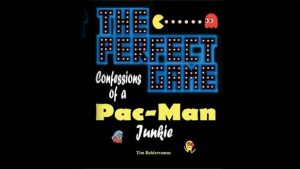
Achieving the “Perfect Game”
Tim Balderramos is the author of The Perfect Game: Confessions of a Pac-Man Junkie and one of the best Pac-Man players on the face of the planet – he was only the fourth player in the entire world to achieve a ‘perfect score’ on the title. Despite his almost superhuman skill on Namco’s coin-op classic, Balderramos explains that like any other player, he was initially drawn in by the game’s charm – something which creator Iwatani had hoped would attract players of both genders. Unlike rivals like Space Invaders, Pac-Man didn’t contain guns or widespread destruction, but instead focused on colourful, appealing characters.
“I remember seeing my first Pac-Man game in December 1981 at The Circus Arcade in Sioux Falls, South Dakota,” Balderramos recalls. “I stepped into the glow of the brightly lit marquee beckoning from the top of the machine and put my first quarter – the first of many – into the coin slot. The object seemed simple – so simple I didn’t bother reading the instructions. Clearly, I was supposed to eat the colourful ghosts that ran around the board. I targeted the red creature as my first victim. Suddenly, he reversed direction and ran after me. After this first embarrassment, it might have been easy to simply abandon this game and choose another, easier game to master. But for some reason, I couldn’t. The game’s unique appeal had, as it had for millions of others, gotten a hold of me and refused to let go. I was hooked. I had caught, as the obscure singing duo Buckner & Garcia would later describe in song, Pac-Man Fever.”
http://www.youtube.com/watch?v=0-MONIvP6kI
Pac-Man’s effect on popular culture
Pac-Man invaded popular culture in a way that simply hadn’t been witnessed before, as DeSpira attests:
“Other than Space Invaders, there never was a game that had up to that point commanded our attention as much nor produced such instant appreciation. It seemed as if it happened overnight, but after the initial sightings of Pac-Man springing up all over town, I began to notice multiple Pac-Man machines in one arcade, and then not long after that entire walls of them sprang up like crazy. The mall was the very time I ever saw an actual queue on a game, ten deep per machine; men, women, kids, teens – even grandmothers – waiting in line to play it. Entire families were drawn to it and all at once. That was what the beginning of ‘Pac-Mania’ looked and sounded like.”
Pac-Man’s simple mechanic meant that gamers of all skill levels could easily pick it up, yet there was plenty of room for talent to shine through.
“Pac-Man hits on the age-old rule of video games,” Patterson states. “The concept is easy enough to understand but challenging to master. It was one of those games that made you tell yourself that you’ll take just one more shot at doing better, because you just know that you’ll do better this time around. Ten games later you realized you’d just played ten games in a row. Regardless of technology, a game that can do that will always draw new players.”
See also: Best iPad Games 2015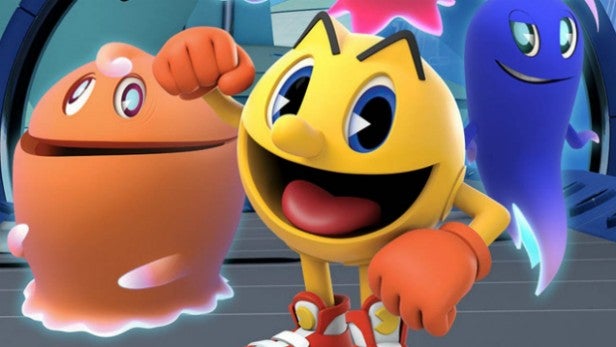
Pac-Man may have his name on the top of the arcade cabinet, but it’s important to remember that this was a title with a full cast, not just a single hero.
“The clearly independent behaviour of the four ghosts gives each of them an almost endearing personality, and even today I find myself thinking of them each in humanistic terms,” laughs Bishop. “Additionally, one of Pac-Man’s strongest features is the tactical dynamic that briefly allows a player to ‘turn the tables’ on the ghosts; there’s something devilishly compelling about the ‘hunted’ turning into the ‘hunter’ at key moments. And the relationships between Pac-Man and the ghosts almost simulate an early sort of multiplayer experience – if you think about it, each ghost almost plays it’s own game against Pac-Man dictated by its personality – Blinky is a much different antagonist than Clyde, for example.”
Balderramos is very much of the same opinion. “I think Pac-Man was one of the first games to show there could be more to a video game than playing against faceless opponents for a nameless cause. This was a game that featured character as well as characters. You weren’t expected to blow stuff up or kill anything. You got to know your character as well as the others in the game. There were objectives as well as opponents that seemed to have a stake in the game and its outcome. In other words, there was a semblance of a story – a story that made one care about this strange world and your role in it.”
In Patterson’s eyes, Pac-Man’s influence extended far beyond just being an amazing game, though – it turned interactive entertainment into something much bigger.
See also: Best iPhone Games 2015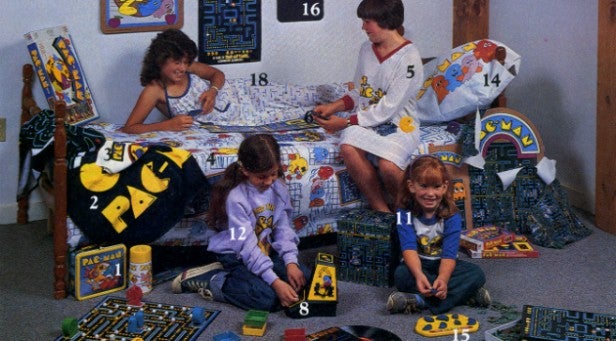
Pac-Man as the first franchise
“Pac-Man was the first video game that ever extended beyond game rooms and became a pop culture phenomenon,” he says. “Cartoons, merchandise, best-selling books even a hit song, Pac-Man’s popularity drew more people to video games than had ever experienced them before. I’ve always felt that the friendliness of the game is also what brought people to become comfortable with not only interacting with video games but with technology in general. Computers and the like were strange and scary things to your average consumer back then. Pac-Man helped them realize there was nothing to fear.”
For DeSpira, Pac-Man’s universal appeal is incredibly important.
“Many games occupy spaces during various parts of their inception and release in which their contributions changed and/or enhanced society or popular culture at large. But Pac-Man was one that universally appealed to all walks of life, age, sex, etc, in ways we haven’t yet seen duplicated in any fashion by any game since. That there isn’t a person in the civilized world who doesn’t recognize Pac-Man’s image is a startling testimony to its appeal and its ability to cross over social barriers and hit right at the heart. Pac-Man’s message is a smile, and a smile is universal. Something everyone can share regardless of language. That makes Pac-Man and its image a very valuable messenger, indeed. I don’t believe any other game has ever accomplished that.”
Like fellow vintage classic Donkey Kong – which was given a new lease of life thanks to the movie King of King in 2007 – Pac-Man is one of those titles which continues to attract the attention of serious high-score chasers, and this has no doubt contributed to the enduring popularity of the character.
“The high score on games like Pac-Man and Ms. Pac-Man will always mean more than the scores on pretty much any other game, because they are the games that everyone has played,” Patterson explains. “You can tell your great grandmother that you got a high score on Pac-Man and she’ll understand what you are talking about. Last I heard, David Race has the world record for the fastest time to a perfect game, meaning he got all 3,333,360 points in a faster time than anyone else ever has officially. The Ms. Pac-Man record has gone rather unchallenged for many years now. If either record fell tomorrow you’d have the mainstream media all over it in a hot second. You can’t guarantee that for any other games.”
Balderramos, as one of the best Pac-Man players on the face of the
planet, is able to offer another perspective on this. “I think Pac-Man
is a big draw for two reasons. One, it requires a lot of study and
preparation to go for a high score, which is what appealed to me when
playing competitively. Two, there is the concept of a ‘perfect game’ in
Pac-Man – a game in which you get every dot, power pellet, fruit bonus
and blue ghost, across all 256 levels of the game, for a total maxed-out
score of 3,333,360. As current Twin Galaxies Head Custodian Jace Hall
once stated, more people have been in an Apollo space capsule orbiting
the moon than have managed to do a perfect Pac-Man.”
See also: Xbox One vs Xbox 360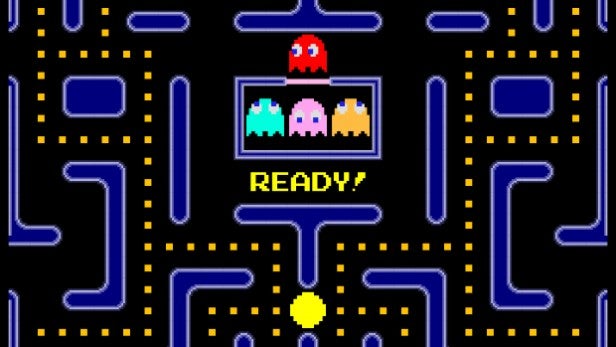
Why’s Pac-Man still so loved?
Although the tastes of gamers have changed over the years, with cute mascots giving way to realistic characters like Lara Croft and Solid Snake, Pac-Man has managed to remain a recognisable face in what is now a very crowded industry. Patterson believes that the disarming simplicity of the character – and his consistency – are what have kept him in the public eye when so many other gaming mascots have fallen on hard times.
“Pac-Man is friendly and approachable. He also hasn’t changed all that much over time. If someone walked away from video games for a long time, they might not recognize Lara Croft or Solid Snake right away, but they’ll recognize Pac-Man because he isn’t too far removed from his roots.” Balderramos agrees. “I think you’d have to go 10,000 miles to find someone who didn’t recognise the little yellow fellow.”
Pac-Man’s 35th comes at a time when the character is arguably more recognisable than ever. He’s the star of a brand new kid’s TV show in the form of Pac-Man And The Ghostly Adventures, and a series of spin-off games have established him as a firm favourite with younger players.
“I very much believe we’ll be noting Pac-Man’s anniversary in another 35 years just as we do today,” says Patterson with a degree of confidence. “He’s pop culture, an icon that transcends video games. People will always remember The Beatles, Babe Ruth and I Love Lucy, even once the generations that enjoyed them have moved on. Pac-Man is video gaming’s peer to those icons, and he will always be part of the video game culture and history.”
See also: PS4 vs PS3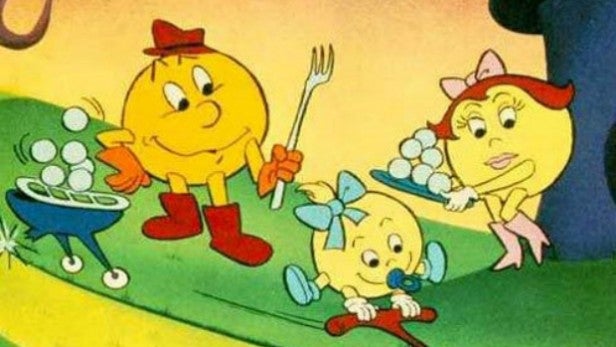
DeSpira likens Namco’s famous character to another – almost identical – pop culture symbol.
“The Smiley Face icon of the 60s – a simple yellow button that captured the attention of an entire generation. 50 years later you still see it and it still provokes the same kind of emotional response in people whether they are too young to be familiar with it or not. That Pac-Man and its yellow disc-face followed along these lines and gave the public even more in return – including never to be able to look at a pizza with one slice missing the same again – ensuring its place in future history simply because it stands for, offers and provokes an eternally universal and common human trait – we smile.”
However, in Bishop’s opinion, Pac-Man isn’t coming back into the public eye, because he never really left it.
“We’ve been releasing new Pac-Man games, toys, shows and other licensed good for years, so I don’t see the popularity of Pac-Man as necessarily something new,” he says. “Pac-Man has been simmering in our mental crock-pots for decades, to the point that it truly has now become a cultural icon invoking strong feelings of nostalgia. I think Pac-Man has become a permanent, iconic part of our cultural reference, and he’s going to live far beyond me!”
But how is Bandai Namco choosing to mark Pac-Man’s 35th? In quite a big way, according to Bishop. The company has celebration plans marked out for the rest of 2015, starting with a rather special event today.
“The next ‘main event’ is Pac-Man’s official global 35th Birthday Celebration on his actual birthday – May 22nd, 2015 – staged here in Chicago,” Bishop explains. The event will be attended by several ‘Pac-Man celebrities’, such as creator Toru Iwatani, Billy Mitchell – the man who recorded the first ever ‘perfect game’ – and Jerry Buckner of the musical group Buckner & Garcia, who recorded the aforementioned 1982 Top 10 hit single Pac-Man Fever.
Pac-Man’s birthday will also be marked by another big-screen movie role in Sony Pictures’ Pixels, starring Adam Sandler and Kevin James. It’s sure to be a big year for the little guy, but a legend of this stature deserves nothing less.

